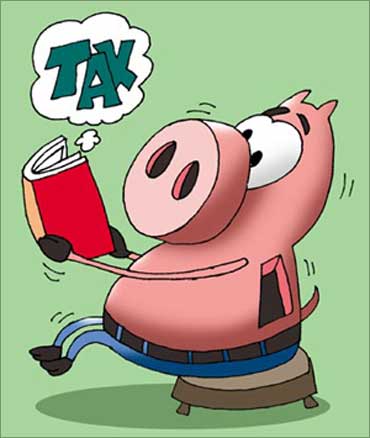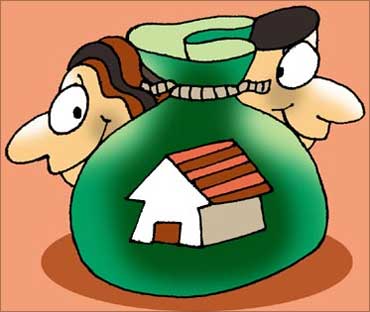 | « Back to article | Print this article |
How to profit from capital gains account scheme
The booming real estate market had meant Kapil Kumar could manage to sell his house in Pune for a neat profit.
He had bought the place with the idea that one day he would retire from his job and also from Mumbai.
However, 10 years on, the price he was getting was something he hadn't even dreamt.
Wanting to make hay while the sun shines, he completed the deal in record time.
The only hitch that remained was the long-term capital gains tax. And in this case, high profits meant higher tax. This set Kumar thinking of ways to save it.
Click NEXT to read more...
How to profit from capital gains account scheme
A visit to his chartered accountant was, thus, warranted.
His CA told him the Income Tax Act exempts capital gains from the sale of a house if the taxpayer invests the same within two years from the date of sale, or constructs another house property within three years from the date of sale.
If the entire capital gain is not used, proportionate deduction is also available.
So, Kumar has two years to buy a new house.
Click NEXT to read more...
How to profit from capital gains account scheme
How does he convey to the income tax officials that he does, indeed, intend to buy a house within the time allotted to him and, hence, will not be paying tax on the capital gains earned during the year?
His CA informed him that in such situations, Kumar can keep the money in a special fixed deposit facility provided by the government.
This facility is known as the Capital Gains Account Scheme. Let us assume that Kumar earned long-term capital gains of Rs. 50 lakh from the sale of his Pune property.
Click NEXT to read more...
How to profit from capital gains account scheme
Section 54 offers exemption from this tax if he purchases within two years or constructs within three years a residential house costing Rs. 50 lakh.
Prior to 1988, Kapil would have been required to pay the tax in the financial year during which the capital gains arose, even if he intended to buy or construct a house.
After purchasing or constructing a house within the stipulated time frame, he could apply for the refund. When he'd actually receive the refund depended on the strength of his prayers.
Click NEXT to read more...
How to profit from capital gains account scheme
Fortunately, the tax department was aware of the problem. CGAS, introduced in 1988, eliminated the need to reopen the assessments for rectification.
In effect, CGAS is a special account with banks or specified institutions, to be used when the amount of capital gain is not utilised for the purchase or construction of the new asset before the due date of furnishing return of income (Notification No. 724(E) dated June 22, 1988).
Click NEXT to read more...
How to profit from capital gains account scheme
There are two types of such accounts: Type-A, a savings deposit, and Type-B, a term deposit. Type-B can be either cumulative or non-cumulative.
The interest rates will be the same as those applicable to the normal savings and term bank deposits.
The effective date for claiming exemption will be the date on which the bank receives the application, subject to realisation of cheque or draft.
Click NEXT to read more...
How to profit from capital gains account scheme
Amounts are transferable from Type-A to Type-B and vice versa. For premature transfers from Type-B to Type-A, the normal penalties will be applicable.
Withdrawals can be made only from Type-A, by a declaration that the amount sought to be withdrawn is proposed to be utilised for the intended purpose.
If the amount to be withdrawn exceeds Rs. 25,000, the bank will make the payment by way of a crossed demand draft drawn in favour of the person to whom the depositor intends to make the payment.
Click NEXT to read more...
How to profit from capital gains account scheme
While the many advantages of CGAS must be acknowledged, one should not ignore the several lacunae which also exist in this facility.
CGAS does not allow any withdrawals, except for the specified purpose (of buying the house), even of interest.
More, the investor is required to pay tax on this interest (to which he has no access) on an accrual basis out of his other income.
Even if the sale is affected in, say, the first month of the financial year (say, April 2011), the taxpayer may deposit the amount in CGAS on the last date for filing returns.
In other words, he can freely utilise this money for 15 months (April 2011 to July 2012) as he likes.
Click NEXT to read more...
How to profit from capital gains account scheme
If this amount is to be treated as capital gain of that year, can the assessee purchase another house within two years or construct within three years? May he use CGAS once again?
It is illogical to do so and also the fact remains that this capital gain has not arisen out of sale of house, shares, and so on. Therefore the answers to these questions are in the negative.
However, experts believe the taxpayer has a right to set-off the carried forward capital losses against these gains.
The writer is director, Wonderland Consultants









